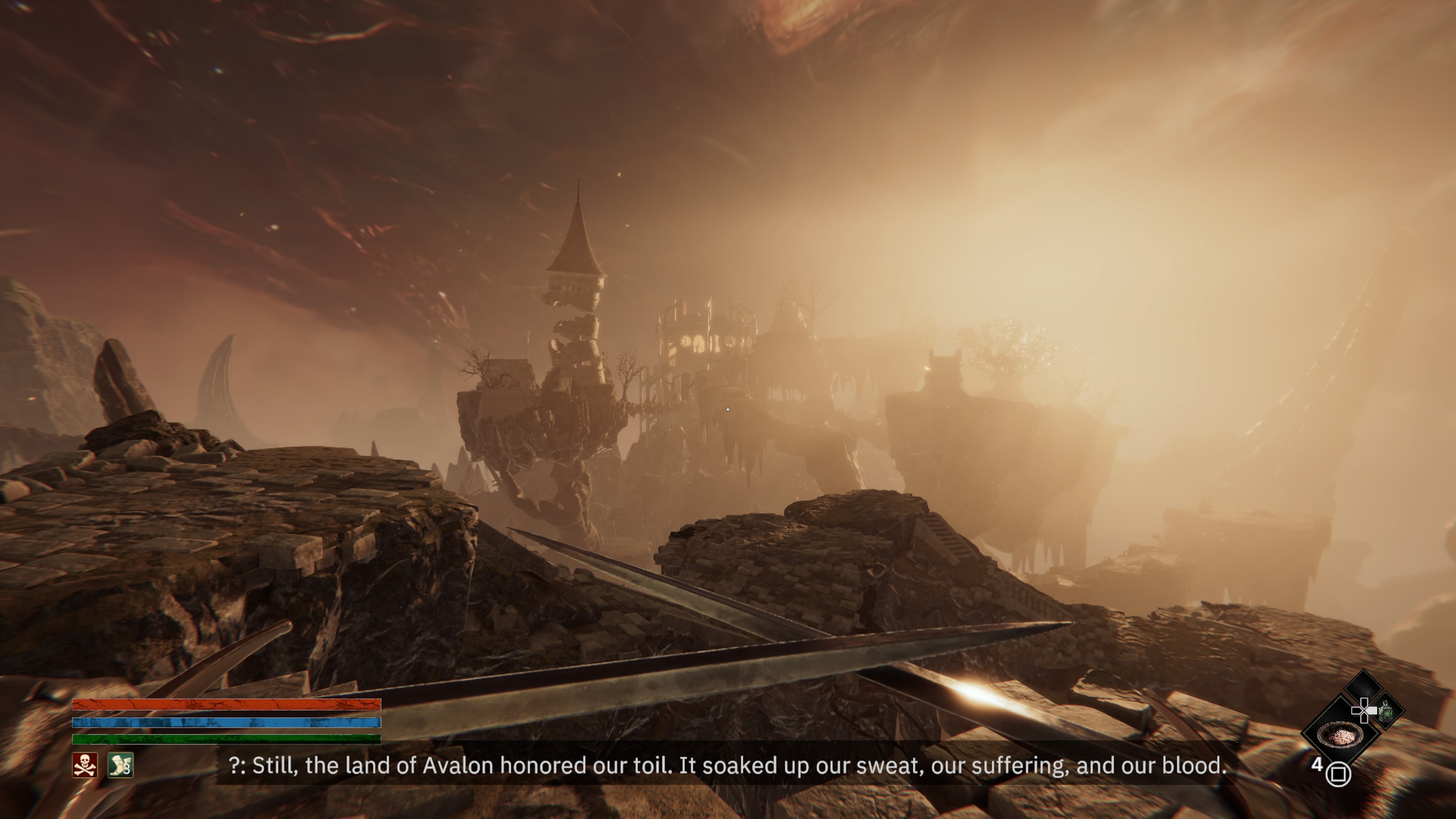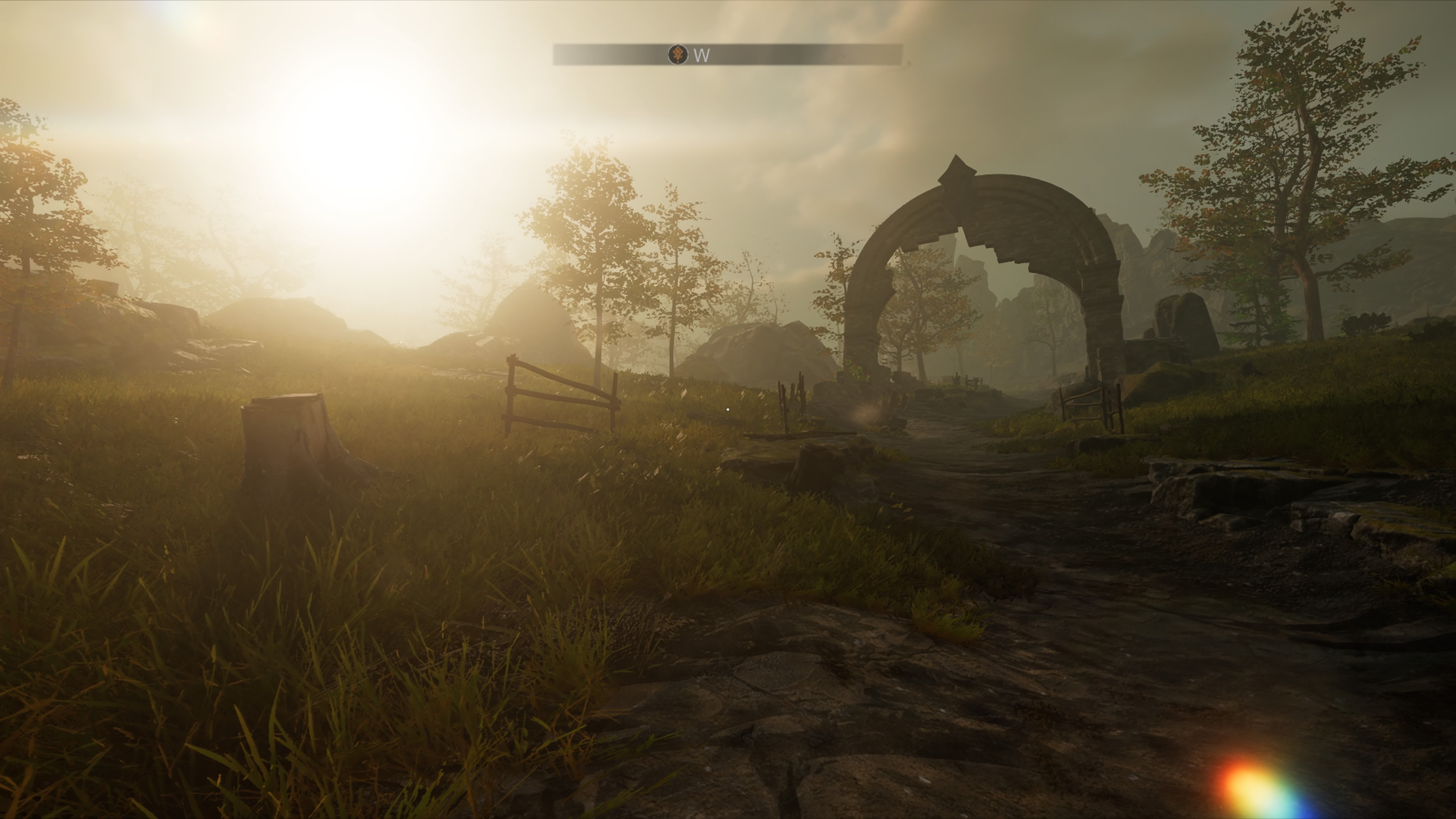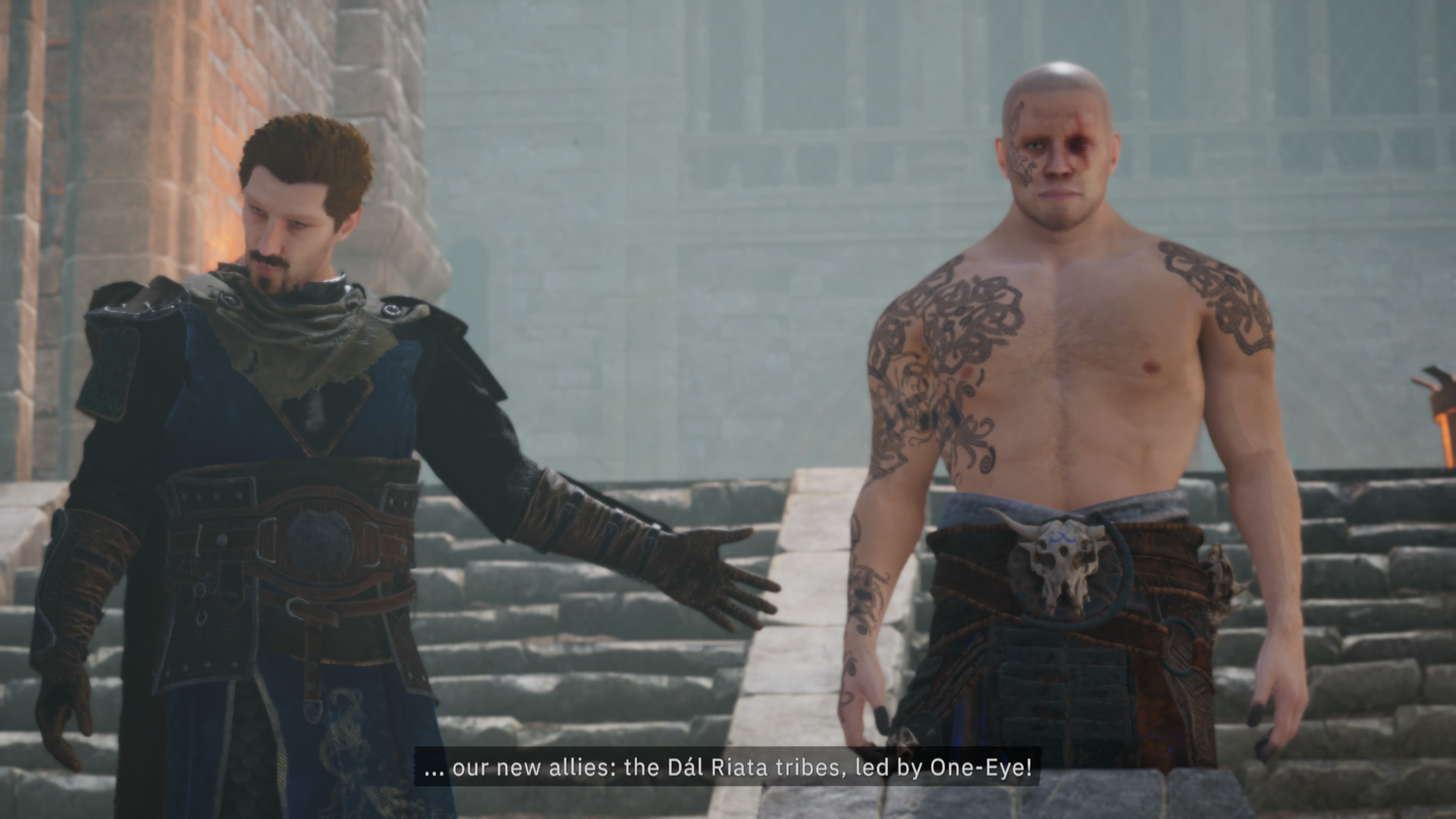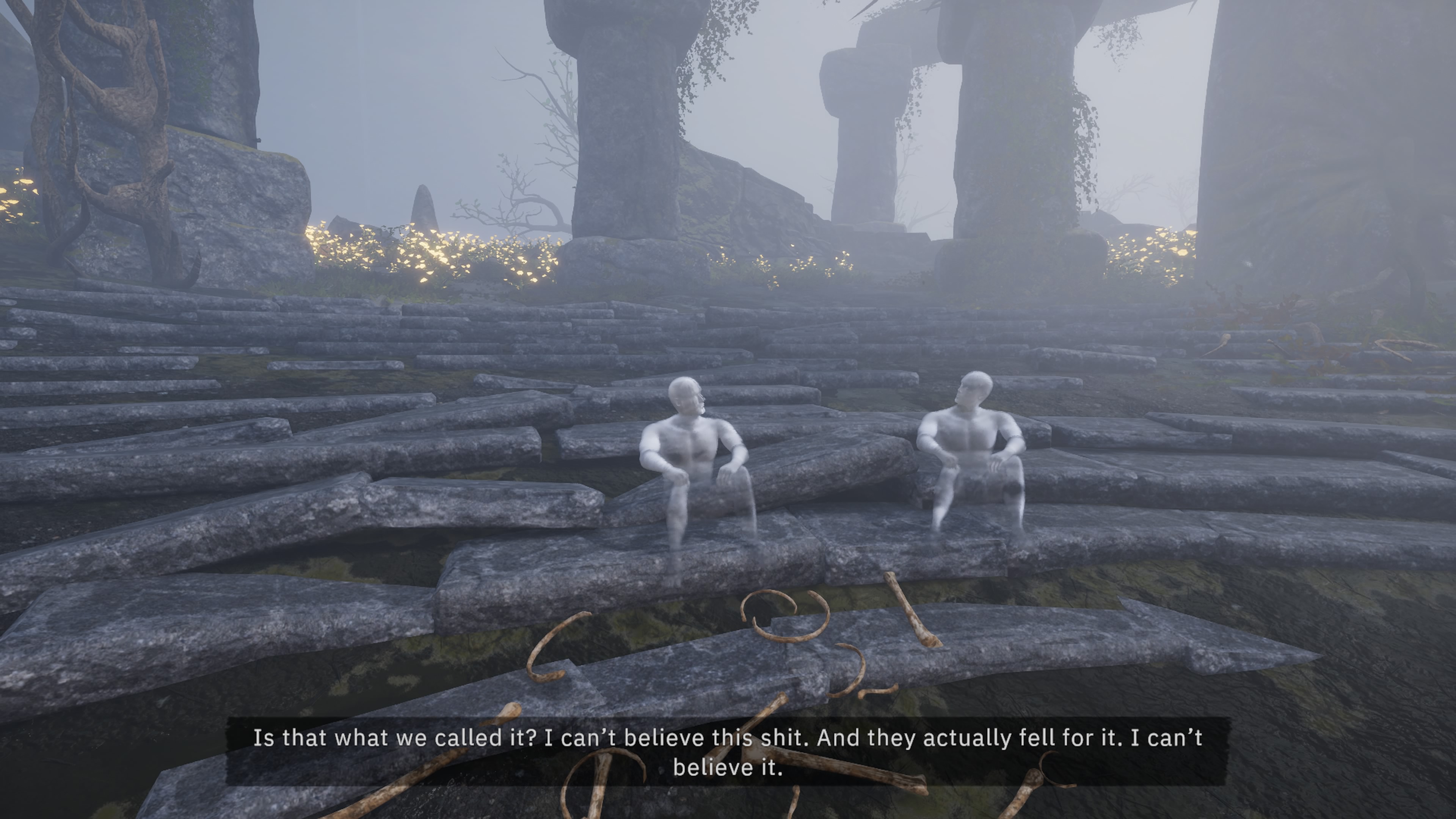
The Fall of Avalon might find its appeal. In fact, fierce competition in a niche Bethesda has masterfully dominated could potentially spark creativity. However, despite my initial enthusiasm, I ended up not taking to Fall of Avalon as I had hoped.
In one particular aspect, Fall of Avalon truly shines, and that’s its immersive setup. Originally a tabletop role-playing game, the Tainted Grail franchise has previously been adapted into a video game. Avalon is a dark fantasy kingdom reminiscent of Arthurian legends, where the concept of a land beset by both supernatural maladies called “Wyrdness” and the everyday struggles of surviving under a power-hungry monarchy resonates deeply. The intrigue mainly arises from the fact that the legendary King Arthur is no more, and although the Knights of the Round Table still exist as titles, the new rulers of Camelot lack the godlike powers of their ancestors. This leaves their rule over these lands precarious, as they are unable to combat the magical blight or suppress rebellions effectively.

Although I found the game’s concept intriguing, I encountered instances where the game’s world-building seemed inconsistent throughout my playtime. This was particularly noticeable because, contrary to an Arthurian backdrop, Fall of Avalon is not set in the fantasy region of Kamelot, but rather in a southern part of the land that appears to be a fictionalized representation of medieval Ireland.
Celtic confusion
In the game’s setting, reminiscent of medieval Ireland, power isn’t centralized but is shared among several clans, each with unique customs that set them apart despite superficial similarities. The three playable maps – Horns of the South, Cuanacht, and Forlorn Swords – represent these scattered clans. As an Irish individual, it’s refreshing to encounter such authentic cultural representations beyond stereotypes in games, limited to drunken caricatures, Assassin’s Creed DLC, or occasional summonings based on Irish folklore.
Regrettably, Tainted Grail: The Fall of Avalon’s portrayal of a fictionalized Irish populace appears rather inconsistent and superficial. The game seems to focus primarily on adopting Irish aesthetics and symbols without delving into the essence of the region, even in a fictitious context. Some of these concerns might raise a few eyebrows, with more criticism stemming from the tabletop role-playing game (TTRPG) it’s based on, rather than any missteps by the developer, Questline. For instance, the decision to integrate Irish-inspired regions onto the same continent as Camelot/England is questionable when considering the historical significance of the sea separating these cultures, which often led to conflicts and a sense of autonomy among the Irish. However, the most significant issue lies in the voice acting.
In Tainted Grail: The Fall of Avalon, a game usually developed by larger teams, the decision to have all Non-Player Characters (NPCs) voiced is an impressive feat, yet it comes with its challenges. However, it’s worth noting that despite some characters having Celtic names, they are all voiced with a British accent. This can feel jarring, even inappropriate, especially when encountering characters like Odhrán who speak as if they hail from the English monarchy, which feels out of place and occasionally uncomfortable.
As a gamer, I can’t help but feel annoyed by the inconsistent approach to transliterating character names. Some names remain faithful to their original spelling, while others have been streamlined for those unfamiliar with the Irish language. This inconsistency is particularly noticeable in the case of Tyge, a character whose name, Tadgh, should be pronounced “Tie-agh”. However, it seems that not everyone received the same memo, as his in-game wife calls him “Tee-gee”, while some voice actors pronounce it correctly.
What’s more vexing is the presence of several Celtic voices, portraying characters with Scottish accents. This oversight suggests a lack of concern or awareness about the importance of using Irish actors for these roles. It would have been great to hear authentic Irish accents in this game that features so many Celtic elements.
In the fantastical realm of Tainted Grail, some character names seem incongruous and out of place. For instance, a figure you encounter in the wintry expanse goes by the name “Nollaig”, which translates to Christmas in Irish. While it’s true that there are some individuals named Nollaig among Irish folk musicians, it’s not a common name and doesn’t fit well within the universe of Tainted Grail, as this world lacks any form of Christianity or real-world holiday references. Thus, the name appears quite peculiar in this context.
While these aspects may not be deal-breakers for some players, it’s important to note that consistently misrepresenting a culture being drawn from can be problematic. For instance, if your game features a region named Cuanacht, which mirrors the real-world Irish province of Connacht, it’s essential to pronounce its name accurately out of respect for the culture you are borrowing from.

Looking closer
Despite the strange and unsettling appearance of the world, it must be acknowledged that it is frequently breathtaking. The design of Fall of Avalon’s world is often eerily beautiful; whether it’s sunlight filtering through thick fog blanketing verdant slopes or snow-capped mountains adorned with the discarded weapons of fallen giants, traversing this realm might be where the game shines brightest. Furthermore, several quests take you through more abstract landscapes, such as a ghostly manor and, at one point in the campaign, a sketchbook-inspired art style for a brief period.
Upon a closer look, the game appears less visually appealing, featuring character models reminiscent of early PS3 era. It’s worth noting that Elder Scrolls games have been criticized for their stiff animations in the past, but the NPCs in Fall of Avalon seem even more rigid and less expressive compared to them.
In simpler terms, playing Fall of Avalon can be likened to a tough battle. The combat frequently feels like a prolonged struggle due to enemies having high health and telegraphed attacks, leading to lengthy skirmishes that often require numerous healing items. This could be due to my initial character choice being a rogue with a focus on dexterity for stealth, which isn’t ideal against the game’s heavily armored Kamelotian enemies and powerful druid mages who drop valuable loot. Additionally, the armor and weapons in Fall of Avalon have stat requirements, meaning you can wear them even if your stats don’t meet the requirement, but they will be significantly less effective. This is fine when playing alone, but the tougher enemies you encounter during the 20 hours of gameplay are predominantly heavily armored Kamelotians and powerful druid mages, making it more challenging if your character isn’t focused on strength, endurance, or spirit.

Well trodden land
In essence, Avalon’s Fall often excels in storytelling, offering various outcomes for main quests and post-game narration reminiscent of Fallout, summarizing your decisions. Side quests also boast engaging writing and scenarios, such as a joke millennia-old prank by the spirits of ancient druids. Regrettably, these quests share the common pitfalls found in many similar open-world games – they can be excessively repetitive.
In essence, many quests essentially involve: traveling to a location, defeating an enemy, collecting an item from the fallen foe, and then returning to the quest giver. However, some main missions add additional layers, requiring you to repeatedly traverse similar territories to deliver items back and forth, which can grow tedious. As you approach the final region and discover that you must unite four tribes, each with their own issues (some minor, others significant), by constantly traveling between areas and battling the same monsters again, you’ll likely find the repetition tiresome. The writing for these quests is generally good, but the repetitive nature can make it feel dull. You might find yourself conserving resources like flint to light fires for resting anywhere, or fast travel, which requires those resources and can be limited, especially if you have an RPG mindset like myself. Even a horse doesn’t completely solve the problem, but the game’s soundtrack during these extended journeys is actually quite enchanting.

I have mixed feelings about Tainted Grail: The Fall of Avalon. Musically, it’s impressive and the game’s ambition is clear, yet I didn’t find myself enjoying most of my gameplay sessions. The occasional stunning landscapes and questlines can’t compensate for a world that seems artificial in portraying a fictionalized Celtic culture. The repetitive need to traverse this world to accomplish simple missions makes exploration challenging, and although there are intriguing narrative elements for role-playing, they aren’t well reflected in the gameplay, which often feels restrictive, limiting you to two specific playstyles.
Read More
- Brawl Stars December 2025 Brawl Talk: Two New Brawlers, Buffie, Vault, New Skins, Game Modes, and more
- Clash Royale Best Boss Bandit Champion decks
- Mobile Legends: Bang Bang (MLBB) Sora Guide: Best Build, Emblem and Gameplay Tips
- Call of Duty Mobile: DMZ Recon Guide: Overview, How to Play, Progression, and more
- Best Hero Card Decks in Clash Royale
- Clash Royale December 2025: Events, Challenges, Tournaments, and Rewards
- Best Arena 9 Decks in Clast Royale
- Clash Royale Best Arena 14 Decks
- Clash Royale Witch Evolution best decks guide
- Brawl Stars December 2025 Brawl Talk: Two New Brawlers, Buffie, Vault, New Skins, Game Modes, and more
2025-05-28 02:28